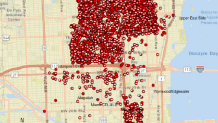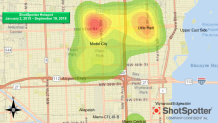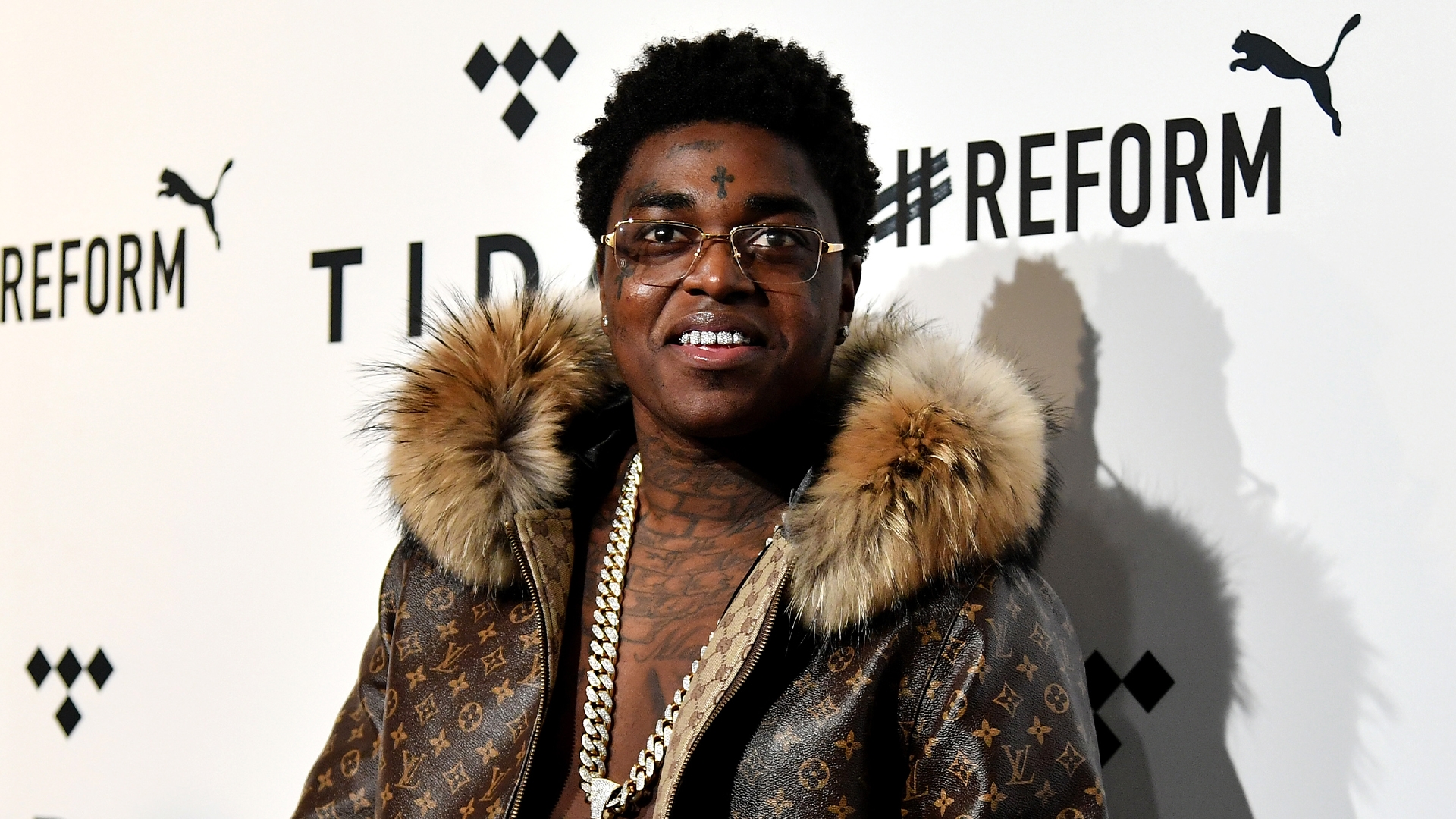When shots were fired during an armed robbery last July, police were notified just after the suspect took off – even before the victims were able to call 911.
“They came quick,” said one of the victims, who agreed to speak with NBC 6 on the condition of anonymity. “By the time I already called, one already arrived.”
Miami Police said they learned about the incident via ShotSpotter - an audio detection system that tracks gunfire in real time.
“It'll give us the address and also the number of rounds that are fired,” said Miami Police Sergeant Gary Sampson.
ShotSpotter uses a network of acoustic sensors that are located on rooftops across the city. The audio is sent to the company’s call center in California where technicians review it and determine whether the alert is a gunshot.
If it is determined to be gunfire, the report is sent to Miami Police.

Sgt. Sampson gets the ShotSpotter alerts on his phone.
Local
He says he has to respond to every one of them, but it’s not an easy task.
The company provided an analysis of alerts to Miami Police. Their analysis shows ShotSpotter sensors have captured close to 7,000 gunfire incidents from January 2015 to September 2018. More than half of them were reported in the area of Liberty City. There were more than 31,000 shots fired during these incidents.

The NBC 6 Investigators tried to obtain the raw data from the Miami Police Department to conduct an independent analysis, but the company opposed its release saying it is proprietary information under its $2.5 million contract with the city.
It is not the first time.
In a 2015 nationwide memo, obtained by Forbes, the company asked customers to respond to requests for records “in a way that would not harm ShotSpotter business.”
When asked if he has been pressured by the company about releasing public records, Miami’s Mayor Francis Suarez was quick to respond “not at all.”
He says the technology is saving lives.
“It gets the officer to the scene quicker, but also gets first responders quicker," he said. “Life and death oftentimes is a matter of seconds."
ShotSpotter is used in 90 cities across the country, from metropolitan high crime areas like Chicago to smaller communities like the city of Glendale in Arizona.
“Eighty to 90 percent of gunfire events don't get reported and so we are invaluable tool in certainly making police departments aware of these events and then allowing a very rapid and precise response,” said ShotSpotter’s CEO Ralph Clark during a phone conversation.
But some question the technology’s role in reducing crime.
At least seven police departments found ShotSpotter was not effective in scoring a high number of arrests, including the Broward Sheriff’s Office – which stopped using it in 2011 saying the benefits didn’t justify the cost.
According to records provided by Miami Police, there have been only two arrests linked to the technology since 2017 - when the department started tracking the information.
Clark says on-scene arrests are rare and that his technology is helping police collect evidence that could lead to future arrests.
“Even if they are not capturing a criminal on scene, if they are getting shell casings, they are interviewing witnesses, they might make an arrest two to three weeks later,” he added.
He says his company’s success is not measured by the number of arrests but rather by detecting gun violence that might otherwise go unreported.

When asked about the findings, Mayor Suarez cites a 35 percent drop in homicides.
“We are talking about 10, and 20, and 30 lives that we are seeing saved on an annual basis,” he said.
But the mayor admits there is no way to know ShotSpotter is the reason behind it.
“In fairness, we don’t,” he said. “I think it’s connected to a variety of different things. I think the ShotSpotter program helps. We have also increased our patrolling force. That also helps.”
While ShotSpotter cannot take “full credit” for the drop in homicides, Clark says it definitely plays a role.
“We think we are a contributing factor to that because we are enabling a police department to be much more responsive in responding, dispatching, investigating these gunfire incidents and all of that adds up, we believe, to reductions,” he said.
For Sgt. Sampson, ShotSpotter is doing what’s supposed to.
“I believe that it saves lives. It makes us more aware of what we are going into,” he said. “It’s just a great tool."
NBC 6 Investigators asked other local law enforcement agencies about their experience with the technology.
Miami Gardens Police Department said ShotSpotter has been used in 28 arrest reports.
Miami-Dade Police had stopped using the technology in 2013, but resumed it again. The department says in the past two years, it has made 24 on-scene arrests and 31 follow-up arrests.
ShotSpotter also shared a county memo that says the Miami-Dade Police Department was able to collect more than 1,600 casings during incidents involving ShotSpotter.



